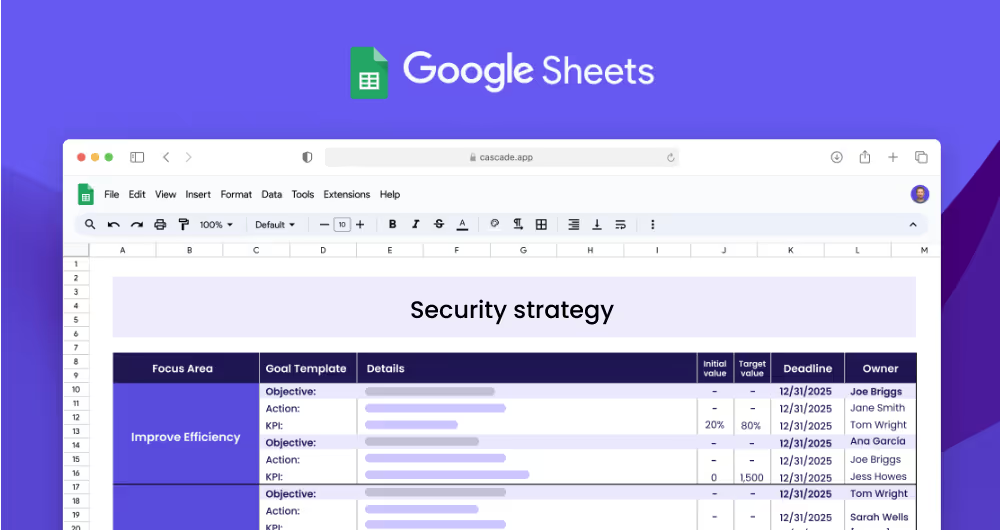A security strategy is a plan of action that an organization develops to protect its assets, people, and information from internal and external threats. It involves identifying potential threats, vulnerabilities, and risks and implementing measures to prevent or mitigate them.
Each focus area has its own objectives, projects, and KPIs to ensure that the strategy is comprehensive and effective.
This security strategy template is designed to help organizations of all sizes and industries create a comprehensive strategy to ensure the security of their operations. It provides a clear structure that helps security teams quickly create a plan that meets their needs. The template covers all the necessary topics, from IT security to network security and physical security.
A focus area is a broad category that defines the scope of your security plan. Examples of focus areas include IT security, network security, and physical security. Each focus area should include objectives, actions, and measurable goals that will help your organization achieve its security objectives.
Objectives are the short-term goals that you want to achieve in order to reach your security plan's ultimate goal. For example, if your focus area is IT security, your objectives could include reducing data breaches or increasing employee security training.
KPIs are specific, measurable goals that you set in order to track the progress of your security plan. For example, if your objective is to reduce data breaches, a KPI could be to decrease data breaches from 4 to 0 per year. Setting KPIs helps you track the progress of your security plan and measure its success.
Projects (or actions) are the steps you should take to achieve your KPIs. For example, if your KPI is to increase employee security training, a project could be to provide regular security training and awareness sessions. It is important to include both short-term and long-term projects in your security plan.
If you're ready to see quicker results and streamline your strategic efforts, Cascade Strategy Execution Software is an essential upgrade from spreadsheets. Offering real-time updates, centralized collaboration, and automated reporting, Cascade ensures that your team can effectively track progress and adapt strategies swiftly to maintain alignment. Enhance your strategic execution with tools like visual dashboards that integrate strategic planning with total execution, effortlessly. Sign-up for free or book a demo with one of our strategy experts and start optimizing your strategy today!


